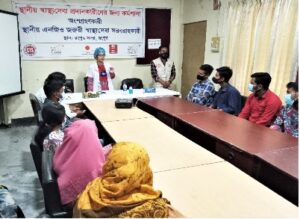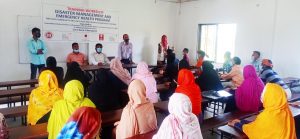
A-PAD Bangladesh Activity Report Month of June 2022
.
Project Title: Capacity Building Project for the Establishment and Sustainable Management of a Multi-Sector Platform for Disaster Management in Bangladesh
Project Period: 17 January, 2022 – 16 January, 2023 (12 month)
- Project Activities and Accomplishments
Bangladesh is one of the hazardprone countries in South Asia. Floods, droughts, landslides, thunderstorms, hurricanes and cyclones occur regularly. Among these earthquakes, floods and drought risk are extremely high. These hazards threaten millions of lives and cause large scale financial, infrastructure, agriculture and productivity losses that seriously hinder Bangladesh’s overall development. Bangladesh has limited resources and lack their own disaster management plans. Considering these problems, this paper attempts to throw light on a more integrated and responsive disaster management system in Bangladesh. Disaster Management approaches in Bangladesh harmonizing systematic inquiry of Disaster Management in Bangladesh is not well conversant in the available literature. Moreover, this approach taken from different programs at national, international and community level, which is not redeveloped, aligned with the field experiences and theoretical viewpoint.
A-PAD Bangladesh started project from January 2020 and presently continue it 17 January 2022 to build up capacity on disaster management. It communicate with the different sectors like local community, community leaders, stakeholders, GOVT. officials continuing training on disaster management. To hold training program A-PAD Bangladesh staff organized small community meeting to sharing ideas on disaster and introduced them about A-PAD Bangladesh activity. A-PAD Bangladesh working 7 divisions in last years.
There are 2 health workers in each divisions whose are doing home visit and aware the local community about basic disaster awareness. The health workers gave basic ideas about disaster management. A-PAD Bangladesh working at the rural areas. If there would be any directions or announcement from GOVT. or any disaster related news has been published the health workers delivered the message to the local community. Like Bangladesh GOVT. started vaccination program which many people did not know and some people did not interested about taking vaccine. So that the health worker visited different areas to give message about the vaccination program. Total 4,535persons were benefited from A-PAD Bangladesh on June 2022.
A-PAD Bangladesh attended coordination meeting at the 7 divisions in Office of Deputy Commissioner. At that meeting different NGOs had joined and explained their activities. Besides this what will be the next activities of the GOVT. and NGOs were discussed at that meeting.
1. To manage the emergency disaster management coordination centers in disaster-prone areas (Outcome 1) The disaster management coordination center in disaster vulnerable areas established in this project (3 year project) functions as a disaster response base in each region, and contributes for preventing the spread of health damage to local residents and community-led disaster risk reduction measures. | ||
Activities | Outcome Indicators to Measure Results: | Project Status: Achievements vs Outcome: If the activity is behind the schedule, please write the reason. |
1-1 Utilization of Emergency Disaster Management Co-ordination Center Beneficiaries: 10 persons x 25 days x 7 divisions x 12 months = 21,000 persons (Monthly Goal: 10 persons x 25 days x 7 divisions = 1,750 persons) | 【Indicators of Outcome】 1-1: The disaster management coordination center is used for coordination meetings among partner organizations and stakeholders in normal times. It will also serve as a base for health and public health guidance for localresidents. In an emergency, emergency health personnel provide health services.21,000 local residents (annual average) in the target district use the disaster response management center or receive health services. (Indicator: number of visitors, record of services provided)
| Total 3,060 people visited to the Disaster Management Coordination Center to discuss about disaster preparedness and health related issues. Dhaka: 550 Persons Cox’s Bazar: 480 Persons Pabna: 460 Persons Bagerhat: 400 Persons Patuakhali: 420 Persons Habiganj: 350 Persons Rangpur: 400 Persons Total = 3,060 Persons
|
1-2 COVID-19 awareness program in 7 divisional areas Beneficiaries:25 participants x 4 sessions x 7 divisions = 700 participants | 1-2: Covid-19 testing lab will prevent the spread of Covid-19 infections by conducting tests. More than 9,000 Covid-19 tests will be performed and the spread of infection is reduced by dealing with residents with symptoms and those who have no symptoms but are infected nearby and are worried about infection. (Indicator: number of tests, report of test results)
| A-PAD Bangladesh conducted COVID-19 awareness programs in 7 divisional areas. The program was conducted to aware the community on COVID-19 and besides to aware them about the parallel disaster. 25 participants x 1 sessions x 7 divisions = 175 participants |
1-3 Establish quality lab facilities to identify the COVID-19 cases Beneficiaries: 30 persons x 25 days x 12 months = 9,000 persons (Monthly Goal: 30 persons x 25 days = 750 persons) | A-PAD Bangladesh established PCR Lab for COVID-19 test. In Bangladesh number of COVID-19 patients has been increased. Expertise expecting the 4th wave has come. In June 2022 total 1050 COVID-19 test has been done | |
2. To establish and strengthen the NPF Partner network (Outcome 2) A-PAD BGD, NPF for disaster reduction and disaster response through collaboration between multi-sectors, will be established and expanded, and the disaster prevention and disaster capacity of its member organizations will be strengthened. | ||
2-1 Self-assessment of networking member organization | 【Indicators of Outcome】 2-1 NPF partner organizations carry out self-assessment, and the resources of each organization are digitized. Self-assessment clarifies partner roles, responsibilities, abilities, and interests. (Indicator: List and data of resources owned by each organization)
| Results of the Self-assessment Required document; – List of resources such as supplies, people and donations provided by partner organizations for a three-year emergency disaster response
|
2-2 Strategic Planning Network Meeting Participants:100 persons x 5 villages x 7 divisions = 3500 participants
| 2-2 The “Strategic Plan for Disaster Prevention, Disaster Preparation, Disaster Response, and Restoration in each district” discussed at the Strategic Meeting will be formulated, and a framework for disaster prevention cooperation will be established. (Indicator: Strategic Plan) |
|
2-3 Networking partners DRR Training Participants:25 persons x 2 org x 7 divisions x 2 times = 700 participants
| 2-3 More than 5 organizations from new partnerships with NPF A-PAD BGD annually to expand the NPF network. (Indicator: number of new MOUs signed for 3 years) 2-4 Resources possessed by A-PAD BGD partner organizations are provided in emergency disaster response, and play the role of that organization in an emergency. (Indicator: Lists of resources such as supplies, people and donations provided by partner organizations fora three-year emergency disaster response) | CIS conducted networking partner DRR training at the 2 divisional areas. Where 2 local organizations had joined at the training. 22-23June 2022, Habiganj, Total Participants 50 25-26 June 2022, Pabna, Total Participants 50 Habiganj suffers significantly increasing climate extremes in recent years with complicated occurrences of flash floods, long term-flood and other extreme events. Although Habiganj has been active in implementing Climate Change Adaptation and Disaster Risk Reduction initiatives at all levels, Loss and Damage still occur and severely affect vulnerable communities, especially remote communities. Recognizing the risk of dealing with unavoidable Loss and Damage, the District Administration collaborates with NGO’s to develop a series of capacity-building activities, including training, to establish a comprehensive linkage between national agencies and local communities in a response to immediate impacts of disasters while ensuring a sustainable foundation of knowledge and knowledge transfer to effectively reduce long-term impacts of Disaster. Community Initiative Society (CIS) arranged a two days training program in Habiganj to cope with the present flood situation on Habiganj Sadar in 2022. The objective of the training was to seek strategic ways to improve the coordination role of Habiganj in directing and ensuring the effectiveness of disaster risk reduction and climate change adaptation activities, which include (i) Successful practices of local, experiential and indigenous knowledge; and (ii) discussing potential integration of Climate Change Adaptation and Disaster Risk Reduction to address Loss and Damage for sustainable development and how to establish linkages between Disaster Risk Reduction strategies to formulate a better protocol. There was discussion on damages that happened due to floods and the Mechanisms to deal with loss & damage. Strategies and measures to reduce damage and loss. In Habiganj it is needed to build up the database and guide local actors/practitioners in better damage and loss reduction. Improving governance capacity for disaster management and climate change response at community and local levels. CIS clarified the purpose and significance of vulnerability and capacity assessment, and what factors influence and up-to-date tools to assist and guide the implementation of vulnerability and capacity assessment in practice. Key considerations for this topic were given and explained to participants, as follows: (i) Using historical information and data. (ii) Rating and classification of local fields/sectors against disaster and climate change impacts. (iii) Using 4 indicators Strength, Weakness, Opportunities and Threats to assess the vulnerability and capacity of local communities in coping with and responding to climate change and natural disasters. Pabna district is one of the disaster-prone areas in Bangladesh and the main disasters are Floods, cyclones, thundering, uncontrolled rainfall, and fires. CIS conducted a training program in Pabna on 25 and 26 June 2022two days. The training program name is Networking partner DRR training. A total of 50 participants from local NGOs and non-governmental organizations attended the training workshop. The training was conducted for two days focusing on different topics. in the training two local Ngo joined-NavaratnosomajunnoyonSanstha and Dorponsomajunnayonsanatha. The main focus of the training was building relationships with Networking partners and developing their skills for disaster risk reduction. on the 1st day, there was a discussion on the present situation in Bangladesh and the role of networking partners in this situation. Due to heavy rainfall over the past week in the Northeastern Indian states, there is an increase in water level observed in the North-Eastern part of Bangladesh which led to a serious flood in that region. In the last 35 days (17th May – 20th June 2022), the National Health Emergency Operations Centre and Control Room of DGHS recorded a total of 2,492 cases of diseases and injuries due to flood issues. Initial reports from the Government of Bangladesh highlight widescale displacement with approximately 481,827 people displaced to 1,605 institutional shelters in four districts across the flood-affected area (Sunamganj, Netrokona, Sylhet, Moulvibazar). 1.6 million children are at risk due to severe floods, threatened by a high risk of drowning and VACW, including gender-based violence/IPV, and family separation as a result of overcrowded shelters.MdEzebor Rahman from NavaratnosomajunnoyonSansthadiscussed Frist aid for snake bites. Because this time it is raining, there is water all around. Snakes usually do not want to stay in the water. So come home for a dry place. If there is any contact with humans, the snake bites if it feels threatened so necessary steps need to be taken in this situation of snake bites. As the situation in flood-affected areas is getting difficult for the local people their partner’s help is needed to overcome their situation. On the second day, there was a discussion on emergency response steps that needed to take in case of flood incidents. There was discussion on steps needed to take before, during and after the flood. Food and drinking water crisis are the primary concern during the flood. So, different types of dry food should be arranged and take steps to preserve pure drinking water. Md Anwar Hossain, Dorponsomajunnayonsanathashared that while we are taking care of human beings, we should not forget the livestock. We need to collect dried hay, bran, and other granular food for livestock. Special attention should be given to the elderly, children, the physically challenged and pregnant women. To save agriculture and farmers in disaster-prone areas, the governments, as well as non-government organizations, have to come forward to distribute free agricultural seeds and provide other agricultural inputs after the flood. There was also a discussion on an emergency response plan for flood-affected areas. |
27-28 Increase NPF members and maintain partnership
| Number of new NPF member organization, number of new MOUs signed for 3 years
| |
27-29 International Symposium on DRR
Participants:200 persons | Questionaries about the symposium Required Document; Symposium Report | |
3. To strengthen the local capacity for emergency response and disaster risk reduction (Outcome 3) The knowledge and abilities of human resources involved in disaster prevention and disaster response will be improved in disastervulnerable areas, contributing to the strengthening of disaster response capacity building of local communities. | ||
3-1 a) Workshop on Disaster Management and Emergency Health Program
Participants:50 persons x 7 divisions x 2 times = 700 persons | 【Indicator of Outcome】 3-1 a) Build a network of community leaders who can lead disaster response and emergency health response in all districts in Bangladesh. (Indicator: number of community leaders who can lead emergency response, list of community leaders for disaster response/emergency health in all 7 districts. (3 years))
| Three days training workshop sad been done in the 1 divisional areas where 50 participants from each divisions had joined. 12-14June 2022, Patuakhali, Total Participants 50
Patuakhali district is one of the disaster-prone areas in Bangladesh. CIS conducted a Workshop on Disaster Management and Emergency health program in Galachipa, Patuakhali on 12, 13, and 14th June 2022. A total of 50 participant’s local community, community leaders, Teachers, Health workers, local NGO’s and Government Officials attended the training workshop. The training was conducted for three days focusing on different topics. The main focus of the training is Disaster management and Emergency health program. . On the 1st day, Doctor SuparnaHawladar (Atkhali Community Clinic) discussed black fungus. A rare but serious fungal infection, known as mucormycosis and colloquially as “black fungus”, is being detected relatively frequently among Covid-19 patients. The disease often manifests in the skin and also affects the lungs and the brain. The sinuses or lungs of such individuals get affected after they inhale fungal spores from the air. Doctors in some states have noted a rise in cases of mucormycosis among people hospitalized or recovering from COVID-19, with some requiring urgent surgery. Usually, mucormycetes do not pose a major threat to those with a healthy immune system. Question session was arranged in the training workshop and feedback was received from them. On the 2nd day Md. Kamal Hossain, NGO (Islamic Relief Bangladesh) discussed a healthy lifestyle and emergencies like high Temperature, fracture, Burn, Snake bites, & physical exercise, drinking enough water, sleep like quantity and time, and Healthy Food, and eating vegetables. On 3rd day there was a discussion on disaster management and emergency health program. Emergencies program means to prepare for, prevent, respond to and recover from all hazards that create health emergencies, including disasters, disease outbreaks and conflicts. To meet the immediate health needs of crisis-affected populations the community must be prepared for and responds to public health emergencies. |
3-1 b) Local NGO Emergency Health providers training
Participants:25 pers/time x 7 divisions = 175 persons | b) Network of human resources with skills and know-how to health response in an emergency will be established in all districts in Bangladesh to provide health services to local residents in an emergency. (Indicator: data of 25 NGO health response personals who can respond in an emergency, cases of activities during an emergency disaster in all districts, and the number of residents provided with services (3 years))
| CIS conducted 5 days training program at Cox’s Bazar and Rangpur where 25 participants had joined the Local NGO Emergency Health Provider Training. 05-09June 2022, Cox’s Bazar, Total Participants 25 14-16, 18, 19 June 2022, Rangpur, Total Participants 25 Cox’s Bazar is located 150km south of the divisional headquarters city of Chittagong Division. Cox’s Bazar lies on a coastal plain in the southeastern corner of Bangladesh. The plain appears to bulge out into the Bay of Bengal. Disasters like cyclones, flooding, and storm surges are becoming more frequent. One of the most coastal areas in Bangladesh is at risk of climate change. CIS organized local Ngo emergency health provider training in Cox’s Bazar. Total 25participants from Different organizations and Local communities joined that training workshop. To establish sustainability among the community. The Training Workshop was conducted on preparing health issues and strategic planning to improve a strong Capacity Building Network among local communities with NGO, Government offices. Creating social awareness on hygiene, sanitization and things to do to prevent various diseases was the purpose of the training. On the First Day, The topic was –Getting prepared during and just after disaster for Pregnancy women. Health officer BakulprabaDey Emphasized pregnant women who have special medical needs. Having any signs of labour call the healthcare provider immediately or 911, or go to the hospital immediately if it is safe to travel. Find out where to shelter and prepared to leave quickly and have your emergency kit that includes copies of medical records, health care providers and prenatal vitamins or medicines prescriptions etc. Second Day, The topic was Caring for children in a disaster(Before, During & After an Emergency). Pharmacist Ahim Kumar Dey said, Regardless of a child’s age, he or she may feel upset or have other strong emotions after an emergency. An emergency can happen anywhere and at any time. Parents need to know what steps they can take before, during and after an emergency to protect their family. Parents ensure that family members are ready and know what to do when emergencies happen. Such steps as preparing an emergency kit, making a plan, being informed and staying informed etc. Third-Day, The topic was-Emergency Preparedness Guide for Disabilities people during disaster. Medical Assistant Russel Dey illustrated emergency preparedness. Emergency preparedness involves three basic steps:1. Knowing the risks 2. Making a plan 3. Getting an emergency kit. Make sure all the emergency kit items are organized in one place, and easy to find & carry. Tag all of one’s needs equipment including instructions on how to use or move each assistive device during an emergency. On the fourth day, The topic was-Emergency nursing in an emergency. Medical Assistant Krishna Pal discussed emergency nursing, the scope of emergency nursing, Principles of emergency care, Triage etc. Fifth Day, The topis was- Health Emergency and Disaster Risk Management on Cyclones, Storm surges: Do’s &Don’t’s. Community Health Officer Priyanka Dey discussed cyclones and storm surges. What measures should be taken during cyclones and storm surges as well. She focused on before the cyclone season, necessary actions, when the cyclone starts, when a particular area is under cyclone warning getting away from low-lying beaches areas close to the coast, during a cyclone, when evacuation is instructed, post-cyclone measures and health issues etc. Innovative and flexible methodologies were adopted in conducting the training. Rangpur is a divisional town in Northern Bangladesh. Located on the east bank Teesta River. This consists of eight districts. Rangpur district has an area of 238.64 sq. km. Statistics show that the poorest people of Bangladesh live in 10 districts of the country of which 5 districts are in the Rangpur division. About 56% of the people of the Rangpur district still live below the poverty line. Geologically, the Rangpur district is completely different from other districts. Due to the geological structure, the people of the Rangpur district face various disasters every year. So economy, education, awareness and culture the people of Rangpur district are lagging far behind other districts. Earthquakes, floods, fires and Thunder are some of the disasters that can be seen in the Rangpur district. Rangpur district is flooded every year due to the Teesta dam, so the river Teesta is called the sorrow of Rangpur district. Providing emergency health care during a disaster is an important issue because they become more vulnerable during a disaster, In the time of disaster more vulnerable pregnant women, and children are disabled. That is why the role of emergency health care providers in times of disaster is undeniable. Each needs to know what role Rangpur is one of the disaster-prone areas and the main disaster in that area is Flood, The main focus of the training workshop was on building up capacity on emergency Health response during and after a disaster. Total 25participants from Different organizations and Local communities joined that training workshop. They do not know about First Aid. Every day our trainer provides the trainees with realistic ideas about first Aid. The training was conducted for Five days focusing on different topics. The main focus of the training was Emergency Health& first aid. As the participants were from different backgrounds and different professions. according to Dr. Peu Sarkar peya (MedicalOfficer.Radisson Specialist hospital), Statistics show that about 83-85% of pregnant women are unaware in time of the disaster, they do not know how much to eat and what issues to be aware of during a disaster. so the most important things to do from the beginning of a girl’s first pregnancy and after giving birth to a child in disaster time. Pregnant women suffer a lot from malnutrition. Pregnant women will be in high places during disasters because of the fear of different animals also dry food should be provided for mother and baby and first Aid boxes should be kept for initial treatment. If you have stopped menstruating for two consecutive months sure that you are pregnant. From the 1stweek of pregnancy folic acid should be taken regularly as per the doctor’s advice. After pregnancy, you should refrain from doing heavy work. Eat nutritious food; go to the doctor regularly from 1st to the last week of pregnancy and checkup to monitor the physical wellbeing of the pregnant mother. AT present Rangpur is facing a flood disaster so on the 2nd day of training the discussion was on natural disasters. The people of Rangpur face various natural calamities every year, including floods and fires. Floods are usually more severe in July – August, Statistics show that in the Rangpur district about 3-4% of children die drowning in water every year. At this time several patients were bitten by snakes. When bitten by snakes and dipped in water patients need Emergency Treatment which is provided by Emergency health care providers. Carbolic acid needs to be stored in every house during a flood and also keep dry foods, light, first aid boxes, keep water purification tablets. What to do as a first-aid treatment for a burn patient, Pour plenty of cold water on the burnt area, and keep a wet towel wrapped, under no circumstances should toothpaste, bark, leaves or salt be applied to the burnt area. Pregnant women should be more careful. The person burning in the first should be taken to the hospital as soon as possible. On the 3rd day, the topic was the number of diarrhea patients in the country is gradually increasing. Last three months 450,000 diarrhea outbreaks in Bangladesh. The trend of northern parrot Rangpur has spread a lot. An emergency health care provider has many roles to play in well a person with diarrhea. A person with diarrhea should be given saline water repeatedly and given dry food and also discuss poisoning the patient at present, there is a high incidence of adolescent suicide in Bangladesh and Rangpur districts. Experts believe that there are various reasons behind this suicide, the most notable of which is poisoning due to family quarrels. Try to make the patient vomit with his fingers in the throat Salted water, and egg whites with raw mustard oil do not use try to vomit. The patient should not be allowed to be unconscious under any circumstances. The patient should be taken to the doctor immediately. 4 the day Nutrition is the balanced diet we eat for physical well-being, the regeneration of damaged cells in all parts of the body, and the growth of the body. In general, we think that expansive foods may have higher nutrition value. Different types of vegetables and fruits are rich in nutrients, if we take these foods, as a rule, the nutrition deficiencies will be filled. Nutrition is very important for maintaining body structure. As the importance of nutrition is essential in human life, Nutrition day is celebrated all over the country on 1st September every year. Nutrition is very important for maintaining good health and physical constitution. And nutritionists have come up with an idea to understand this with B M I. Full form of B M I: Body mass index. In a human body when B M I 16. When it is “Between” 5-24.9 then the structure of that body is called a perfect and well-formed body. If B M I is 25-29.9 in the human body is above 30, various diseases occur in the human body and the impression of age appears. B M I of the human body is measured by body weight and height. To make the body beautiful, you have to eat basic foods like sugar, carbs, fats etc. every day according to the rules. To build bones in the body, calcium, magnesium, and vitamin-D foods should be eaten. To get rid of clone cancer and constipation, you must drink more water. Iron tablets should be taken to make blood in the body. Saline must be eaten during hot weather, sodium is very important for retaining water in the body. The eyes are an essential part of the human body. If redness appears in the eyes, more water should be given. One has to look at the green herbs 20 meters away for 20 minutes and 20 seconds. After 6 months or 1 year, everyone’s eye power should be tested. If the newborn baby is born before 32 weeks and weighs less than 2 kg, the child must be consulted with a doctor and should do the necessary steps.
|
3-2 Seminar for Developing public-private partnership innovation success models
Participants:50persons x 7divisions x 2times =700participant | 3-2 Disaster information and emergency response records are accumulated as a disaster archive. In addition, the activities and results of this project of A-PAD BGD will be introduced at international symposiums, internationalorganizations, and domestic and foreign media. (Indicator: situation report at the time of disaster, number of activity reports posted on A-PAD BGD website, international symposium report, introductory article) | A-PAD Bangladesh conducted public private partnership seminar at Dhaka. 50 participants had joined in each division. 16June 2022, Bagerhat, Total Participants 50
Bagerhat district is one of the disaster-prone areas in Bangladesh.16 June -2022 Community Initiative Society (CIS) organized a training workshop on Seminar on Public-Private Partnership Innovation Success in Sharankhola, Bagerhat. For geographic location and weather conditions, cyclones, tidal floods, erratic rainfall, cold wave, arsenic contamination, and tornado are common in this area. In the meeting, Mir Sarwar Hossain (Executive Director) shared his opinion that Different disaster has been flooding the last few days in Bangladesh and the people are worried about the rising water level of the Baleshwar River. If the river level rises different villages may be filled. All need to acquire skills and develop knowledge and everyone needs to work together to tackle this disaster.RinaAkter, a Teacher, says that Disaster is changing we need to create more awareness at the Community level. Private Sector, local NGO’s and Government Officials have to work in an integrated manner. The main focus of the training was on public-private collaboration and building upon the capacity for emergency response during and after a disaster. A total of 50 participant community leaders, Teachers, the Private Sector, local NGO’s and Government Officials attended the training. The participants were from different backgrounds and different professions so the training module was organized from that perspective. |
3-3 Update website contents as E-resources for Disaster Management | https://apad-bd.org/disaster-situation-analysis-report/ https://apad-bd.org/a-pad-bangladesh-activity-report-month-of-may-2022/
| |
- Challenges
Because of the Flood situation it was tough to get training venue.
- Practice in collaborationwithA-PAD Bangladesh Network Partners
Please writegood practice in collaboration with partner organizations
- Any contributionFunds Received and Grants Applied / Planned and Implemented Projects by CIS including Emergency Response
Please write Projects name and its fund resources
- Relationship with Bangladesh Government and Japanese Embassy
Please write aboutMeeting with Government officials

Disaster Awareness Program

Disaster Awareness Program
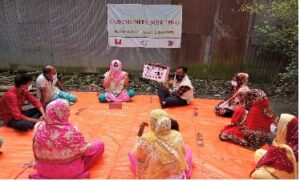
Disaster Awareness Program

Disaster Awareness Program
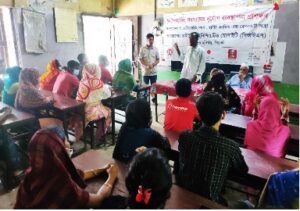
Networking Partner DRR Training-Habiganj
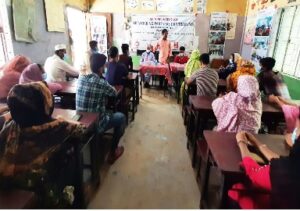
Networking Partner DRR Training-Habiganj
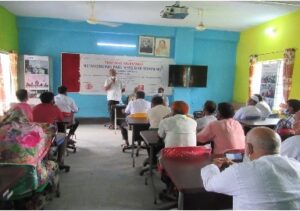
Networking Partner DRR Training-Pabna

Networking Partner DRR Training-Pabna
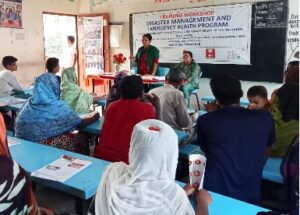
Workshop on Disaster Management and Emergency Health Program- Patuakhali
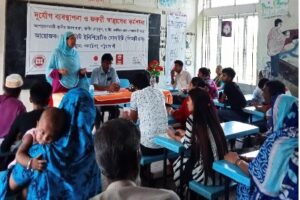
Workshop on Disaster Management and Emergency Health Program- Patuakhali

Workshop on Disaster Management and Emergency Health Program- Patuakhali

Workshop on Disaster Management and Emergency Health Program- Patuakhali
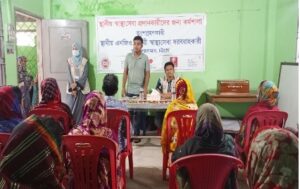
Local NGO Emergency Health provider Training-Cox’s Bazar

Local NGO Emergency Health provider Training-Cox’s Bazar
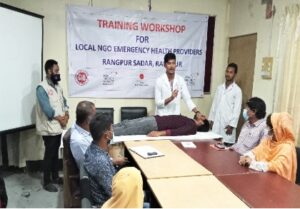
Local NGO Emergency Health Provider Training- Rangpur
